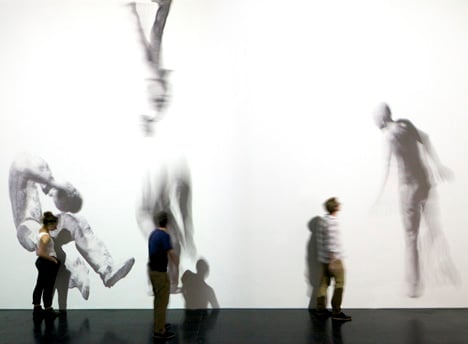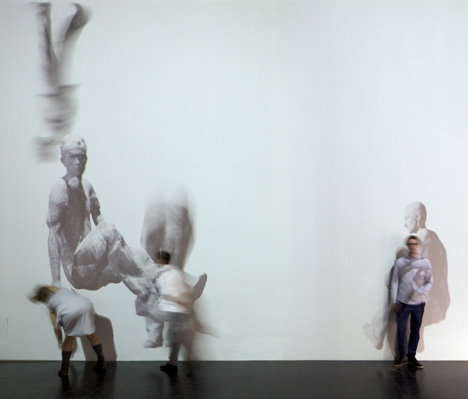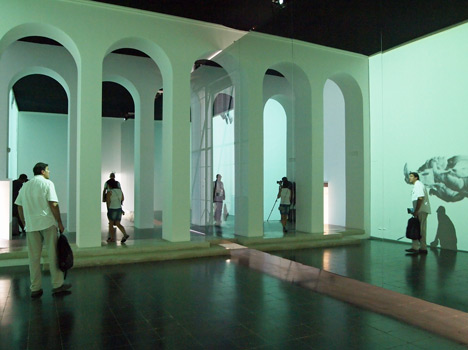Austrian Pavilion at Venice Architecture Biennale 2012
Real and animated figures are reflected by a trembling mirror inside the Austrian Pavilion at the Venice Architecture Biennale.

Top and above: photography is by Günter Wett
The animated, blurry characters are projected onto the walls behind visitors and react to their movements by occasionally following them as they walk through the rooms.

Above: photograph is by Günter Wett
This effect is created using a system of tracking cameras, which record movements and relay them back to the projectors.

Fans are positioned behind the mirrors make their surfaces ripple.

Architect Wolfgang Tschapeller created the installation - see more of his work on Dezeen here.
Other pavilions we've featured from the biennale include the Russian Pavilion filled with QR codes and the Dutch Pavilion that features moving curtains.
See all out stories about the Venice Architecture Biennale »
Here's some more information from the curators:
The installation shifts the perception of buildings and concentrates on those who live in them. No buildings are to be seen, but rather figures, digital figures or digitally animated body surfaces.Taken as the starting point of the project was the accelerated technological development in the past decades and the associated scientific insights, especially in the “processing” and “forming” of the human body by medicine and in the natural sciences. As the “object” of research, the body and the so-called mind indeed entailed that scientific progress shaping our everyday lives which is, in reality, uncircumventable from a knowledge theory perspective, but leaves fundamental questions about the future of humanness open. The exhibition raises issues of the possible impacts of these developments on architectonic thinking and the production of space.
The projection shows an interplay of animated, digital figures and thus a social physics. If we continue writing the current technological and scientific developments in the context of the body as we have until now, the questions arises as to which role architecture will play under these preconditions. Will architecture and the handling of our bodies change to such an extent that both areas enter into symbiotic relationships and thus abandon or swap their traditional roles? Must one think of architecture in a more corporeal manner, like a “living” organism, or will our bodies be increasingly treated architectonically and technically so that spatial production will acquire a different meaning? Since the body is increasingly becoming a phenomenon of territorial and technological thinking, the human an eerie being, familiar and yet so foreign.